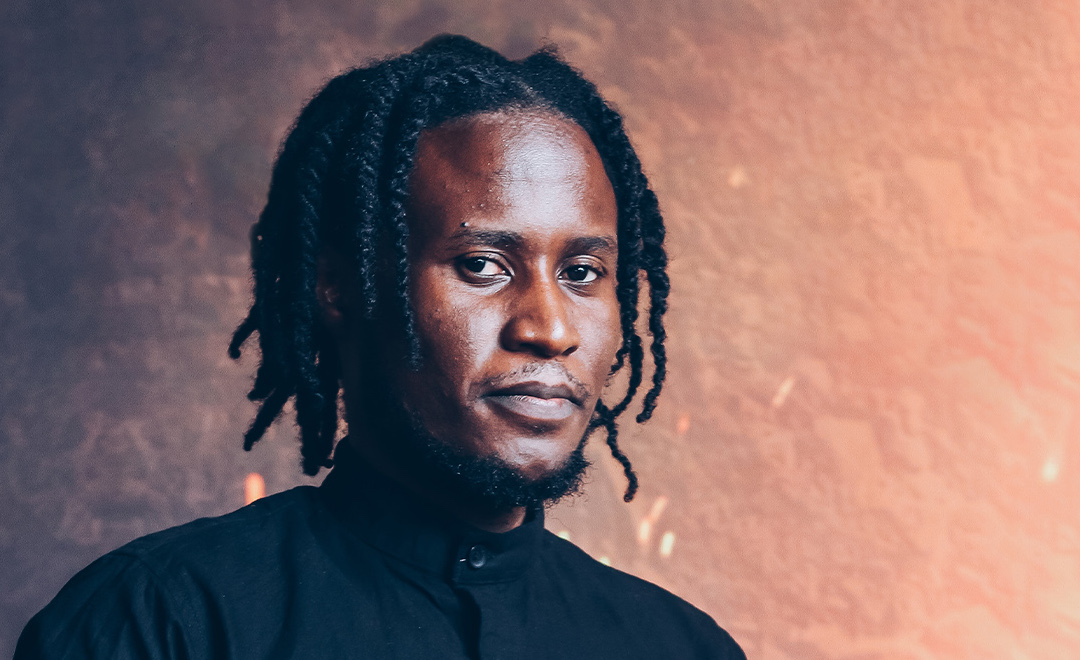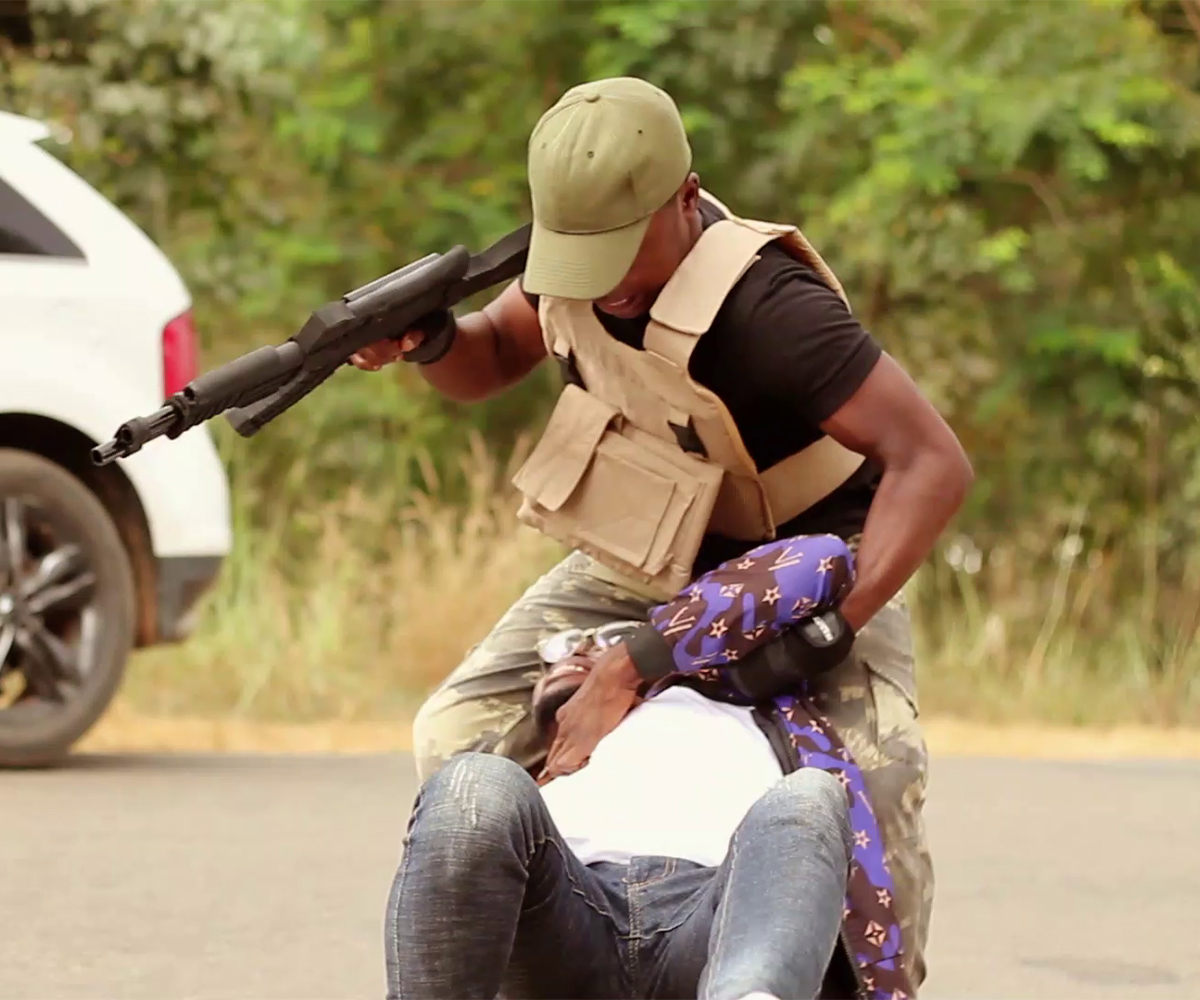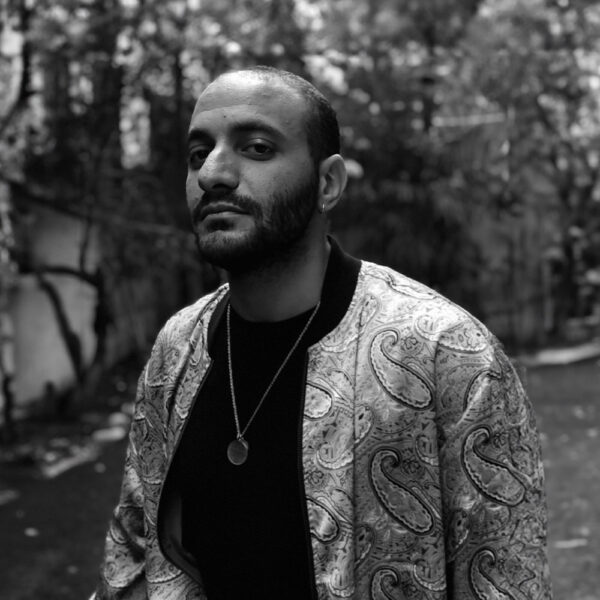
Photo credit: Abdulrahman Khedr
Film & TV
Abdulrahman Khedr Imagines the Future of Pan-African Animation

Photo credit: Abdulrahman Khedr
Khedr infuses ‘Kizazi’ with his Egyptian heritage as he leads the push for Africa’s bid in the animated film space
By Wale Oloworekende
September 2023
In July 2023, Disney+ announced the release of an African-inspired anthology of animation shorts titled Kizazi Moto: Generation Fire. Egyptian production house, Giraffics, and its CEO, Abdulrahman Khedr, worked on the series, producing First Totem Problems and doing pre-production on Stardust. Stardust, an Egyptian-fronted short, tells a coming-of-age story against a North African backdrop while First Totem Problems reimagines a popular South African folklore in a tech-enhanced African utopia.
As a kid growing up in Cairo, Abdulrahman Khedr was utterly hypnotised by the transformative power of movies. He remembers his father using those mediums to pass him essential lessons about life, humility, and kindness. One film specifically, Steven Spielberg’s 1987 classic, Empire of the Sun, was a useful lesson in being tender-hearted. “I was 7 or 8 years old when I watched the movie,” Abdulrahman said on a Zoom call with STATEMENT recently. “It’s an example of how my dad used films to teach us how to treat people in a good way.”
When the time came for Khedr to study at the university, he bowed to age-long Egyptian conventions and decided to study engineering, but his heart wasn’t in it. In his final year in school, he decided to co-found a production company, Axeer, with some friends and went on to produce music videos, infomercials, and a feature film. Keen to broaden his creative sphere, he co-founded another company, Giraffics, in 2017, hoping to produce Egypt’s first global animation film.
A continent-wide search for collaborators and funding brought them to Stuart Forrest, the CEO of Triggerfish Animations, the largest animation firm in Africa. When the opportunity to work on a series of afro-futuristic animated shorts for the project that would become Disney+’s Kizazi Moto: Generation Fire came up, Giraffics and Khedr were invited to contribute stories to the anthology.
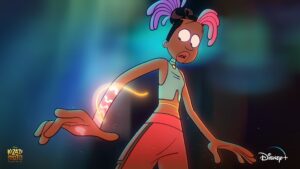
Aside from accepting one of the stories, Stardust, pitched by Giraffics, the company was tapped to produce another film, First Totem Problems. Primarily inspired by South African folklore, First Totem Problems resulted from a Pan-African collaboration between Giraffics and South African director, Tshepo Moche, opening a world of possibilities for such collaborations going forward.
STATEMENT spoke to Khedr about the state of animation in Egypt, working on Kizazi Moto: Generation Fire, collaborating with a South African director, and the future of African animation.
This interview has been edited for length and clarity.
What is the landscape of the Egyptian animation industry?
Khedr: So, basically, we have a lot of studios that work on animated commercials, and are good on that front. There are amazing studios in Egypt, amazing talents, and amazing artists, but the thing is animation costs a lot of money to produce, and it takes a long time because you can shoot a feature film in Egypt in three or four months maybe, and then, you release it to theatres, you make money, you sell it to streaming services, but with animation films, it takes 3 to 4 years in production, and then, with the story and trying to sell the film and everything, the process can take up to 5 years, and that’s why no one really does it, because the ROI is low. There’s no pay, and now, there’s really no ROI in terms of animation. And when it comes to shows, I mean we have animated shows, but they are not many. You can find one every few years, so it’s still a bit basic.
When did the conversation start about working on these animated shorts for Disney?
We’d been in talks with Triggerfish. We met with Stuart first, and then we met online with Anthony, and we’ve been talking a lot about The Grand Night, our film. They know how we do things, we know how they do things. We know that they are the biggest animation studio in Africa, and they know that we are the up-and-coming studio, and they also do 3D, we do 2D. At some point, Triggerfish approached us, and they were like, “We have a pitch…For Disney, we have this show that we are running and we want you guys to pitch your stories,” So, we invited several Egyptian writers and directors to submit their stories, which we then sent to Disney.
Our story, Stardust, which was accepted was directed by Ahmed Teilab. We started working on the story and then decided that this film should be in 3D, not 2D. And because we don’t do 3D, Triggerfish said they were going to do the production, leaving us to do the pre-production. ” We did some sort of consultancy with Teilab during pre-production, but Triggerfish did amazing work in the production. A month after we started working on “Stardust,” they said, “Okay. We have another film, and It’s by a South African director, Tshepo Moche. It’s amazing.” We heard the story, and we read it, and then we submitted our proposal to actually do the production, and worked with Tshepo from the beginning to the end.
I’m really curious about “First Totem Problems.” It’s a South African story rooted in the folk tradition of South Africa, and it was produced by you, an Egyptian company. How did you get into the creative space to translate that kind of story? What was the discussion like with the writer, the producer and the director? How did that come about?
Well, the process with “First Totem Problems” was eye-opening for us because somehow, and I’m not exaggerating about it, it really did inform us more about Africa because as Egypt, we are part of Africa, but then—
Your culture is a bit different.
Yeah. Exactly. Our culture is a bit different. They call us part of the MENA, but we are Africans too. But then, during the process, we started feeling like we connected way more with Africa. I mean, when it comes to the cultural heritage, to the language—not like the actual languages, love languages or family ties, everything—it was amazing. Working with Tshepo was an amazing experience because you have a South African writer and director, Tshepo, and then the assistant director is Egyptian, with an all-Egyptian artist and production team. And we spent the first few months in pre-production knowing and learning more about the story, the characters, the best things to do and not do, the character features, and the words that we should use a lot when writing this.
To make it authentic?
Exactly. Because we wanted the experience to be extremely authentic, and then, we actually flew Tshepo to Egypt with the producer on the show. They came to Egypt and stayed with us for two weeks in the office. Whenever you hear Tshepo, the director, talking, she always talks about family. We are her small family because somehow, the team spent more time with her absorbing everything. I’ve never had this many meetings in my life, and they really connected. Flying Tshepo to Egypt strengthened our connection more, and then, the team was able to think like her and do what she wanted in terms of culture and heritage.
This brings me to a question that is really central to the vision of animation on the continent. What do these kinds of collaborations from different parts of Africa, and different cultures, mean for the future of Pan-African collaborations and the animation industry on the continent?
Africa is still a baby in terms of the animation and creative industries. The US has been way ahead, Europe is way ahead, but Africa has its pros and cons. One of the pros is that we still have many stories to tell. Our storytelling and formal storytelling are different, and the stories we tell are different. It’s literally the land of untold stories, right? There’s authentic global content from the continent before, so we have a lot of years ahead of us to do it. People expect more and more stories. That’s the thing about “Kizazi Moto,” It was so fresh because no one had sold a thing like this before. But the thing is, I don’t think that one studio can only do it.
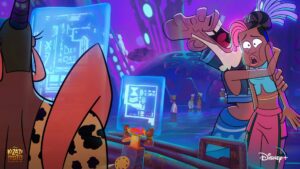
It would really depend on continental partnerships and continental co-productions between different companies and studios from different countries across the continent to actually do something this big, and it really happened with Kizazi Moto. Yes, Triggerfish was the main production company. They managed the whole project because they are bigger than us, but they did it with many African studios, writers, and directors. So, it gave it an authentic voice being done by a South African production company and with companies from Africa.
I really believe that cooperation, collaboration, and partnerships between different studios will take us further because the cost is extremely expensive. Most of these studios aren’t big enough to take one whole project on their own.
Okay. I’m also curious about “Stardust.” What was the process of getting that together? This one seems like it was done mostly within Egypt. So, can you run me through the process, the timeline, and how it all came about?
So, “Stardust” was the reverse. For “Stardust,” it was an Egyptian writer and director. The pre-production team were all Egyptian, the concept artists, the illustrators, etc. It’s not an Egyptian story. It’s more of a North African story, and you don’t know where it takes place, but you know it is in the Sahara, North Africa. It took some time to finish the story and the script and find something that could hold the space during the production. Once we delivered the pre-production work and the concepts for the story and everything, Triggerfish started with their team to do the production. The production of the two series took almost a year. The actual production took a year. Teilab actually flew to South Africa to finish the film.
Is there a plan for Giraffics to do a showcase soon? What is it looking like in the future?
So, “Kizazi Moto” was the biggest project we have worked on. But we have a lot of projects in our backline. We have The Grand Night — which we’re currently writing the script for — based on folklore and is also a puppet theatrical act in Egypt. It’s like a very old one. We are giving it a retouch and writing a whole script for a full-feature animated film, with the film hopefully being produced by Triggerfish.
We also have another film that we are working on called Cleo with Barry Cook. He was the director of Mulan. Right now, he’s working on this film with Lori. It’s about young Cleopatra. It’s actually a nice project. We did some of the visual development work, But it hasn’t been picked up yet. For us, we know that being the first studio from the North African region to work with Disney gives us some sort of knowledge and experience in terms of the pipeline, the things to do, what not to do, and the quality control we have on our projects. So, we hope that this could help us.
I noticed the elements of Afro-futurism across the series and even in “First Totem Problems” and “Stardust” How did the visualisation process come about? How were you able to zero in on these thoughts and bring them to life?
After talking to most directors on the show, I learnt that they had complete freedom. I mean, they had guidelines from Disney and the executives on the project, and it helped them a lot, but these guidelines were not constraints. They were left with the complete freedom to be authentic and do whatever they wanted and envisioned.
So, everything came from every director’s personal beliefs or experience. They had complete freedom to imagine what they wanted. Teilab imagined something, and Tshepo imagined something else, but they all had a theme, and that’s why it became so diverse. Also, everything on its own stands out as a specific project.
I think imagination is one of the most important things needed in Africa, our people need to dare to imagine stuff, and that’s why I feel like a project like Kizazi Moto is important. How important is it that the imaginations brought to life on Kizazi Moto are something people can watch now?
We have enough talented artists with amazing creativity, talent, and imagination to actually come up with anything, and this has shown in Kizazi Moto that when African talents are given a chance, they produce something amazing. I remember when we were in Annecy this year doing the screening of the Kizazi Moto anthology, and then there were questions for Disney and Triggerfish.
After the questions, there was this one guy that said, “Okay. I don’t have a question, but I want to say something. I’m from Nigeria, I work in an animation studio and watched this series. It really gives us hope because it is the first time to see something as authentic as this made by Africans.” He said, “I’m talking on my behalf, on my studio’s behalf, and on behalf of most of the studios that I know; this gives us so much hope.” So, I guess, if there is the chance, if there’s the opportunity for the studios to work, for the artists to work, then there’s the imagination and creativity that can start everything.
